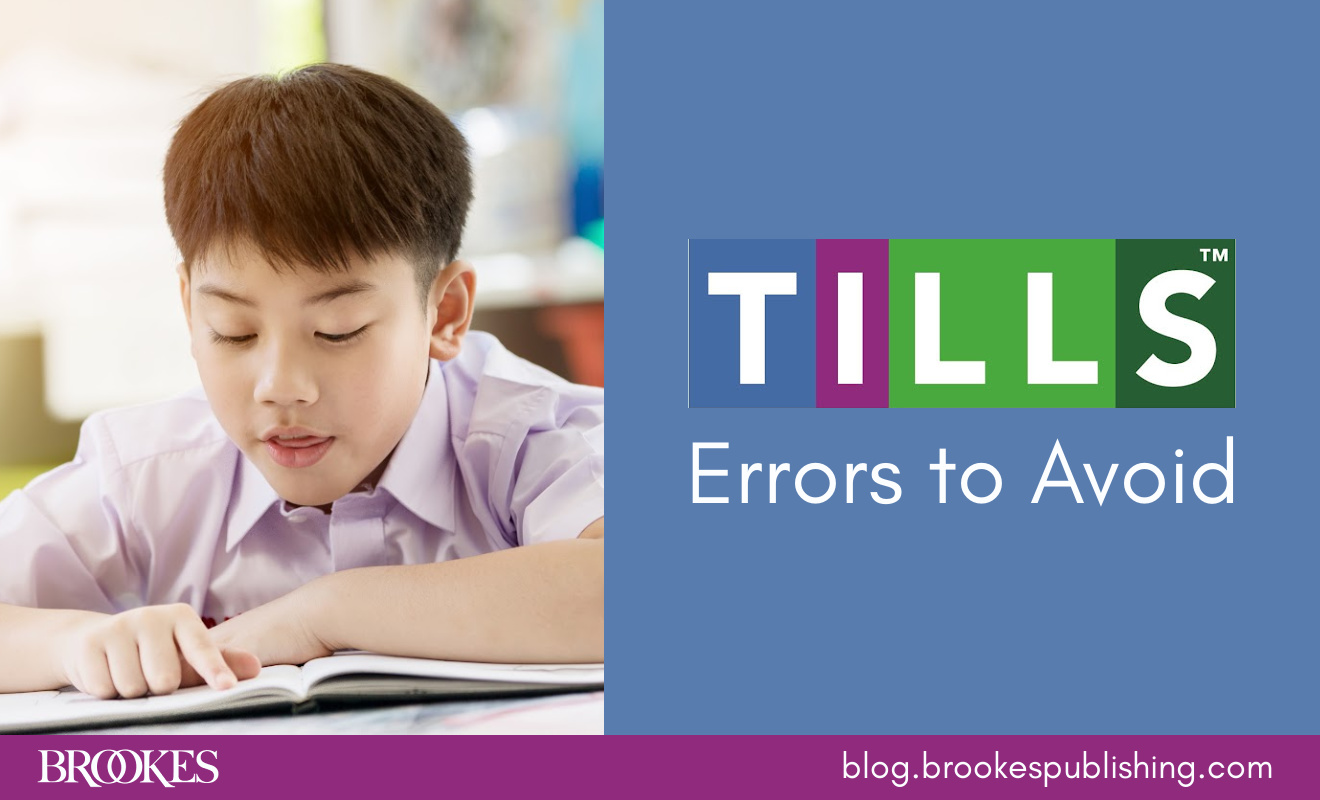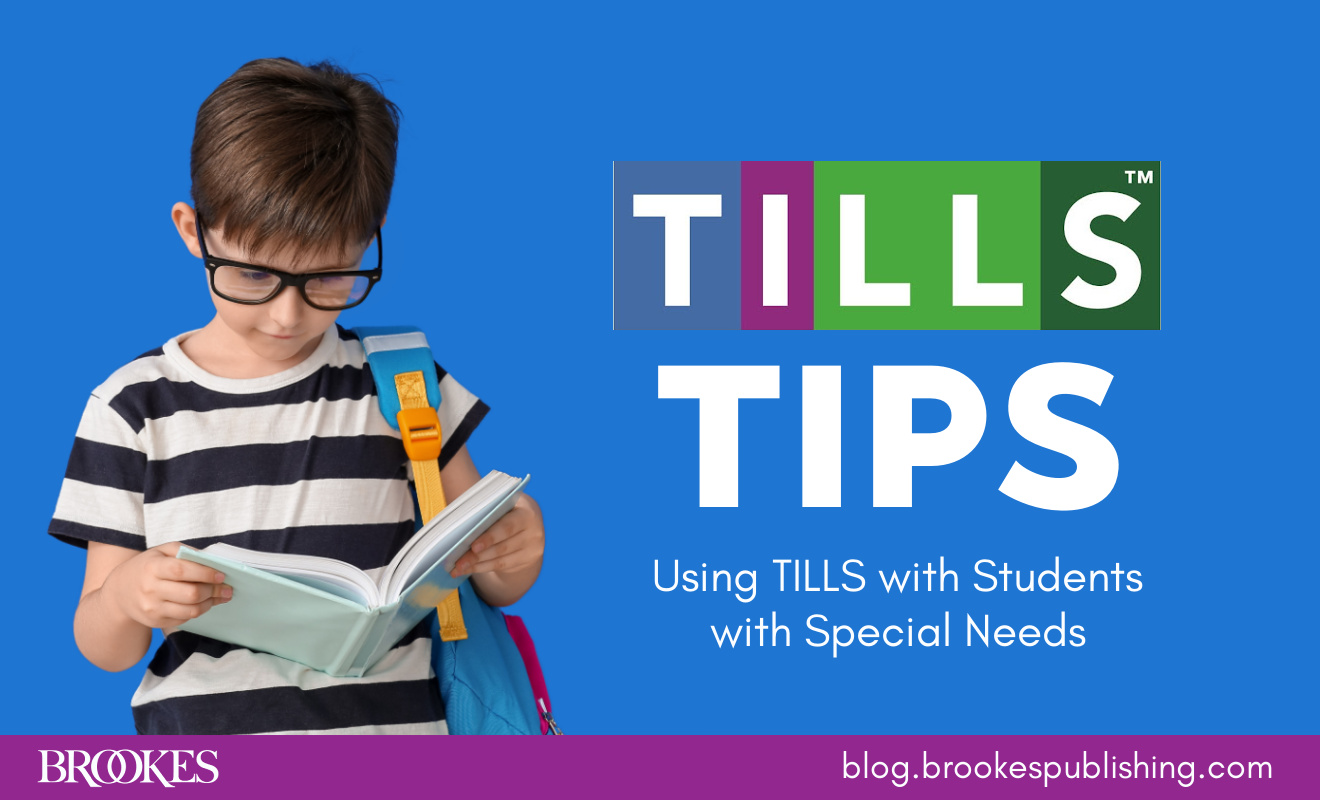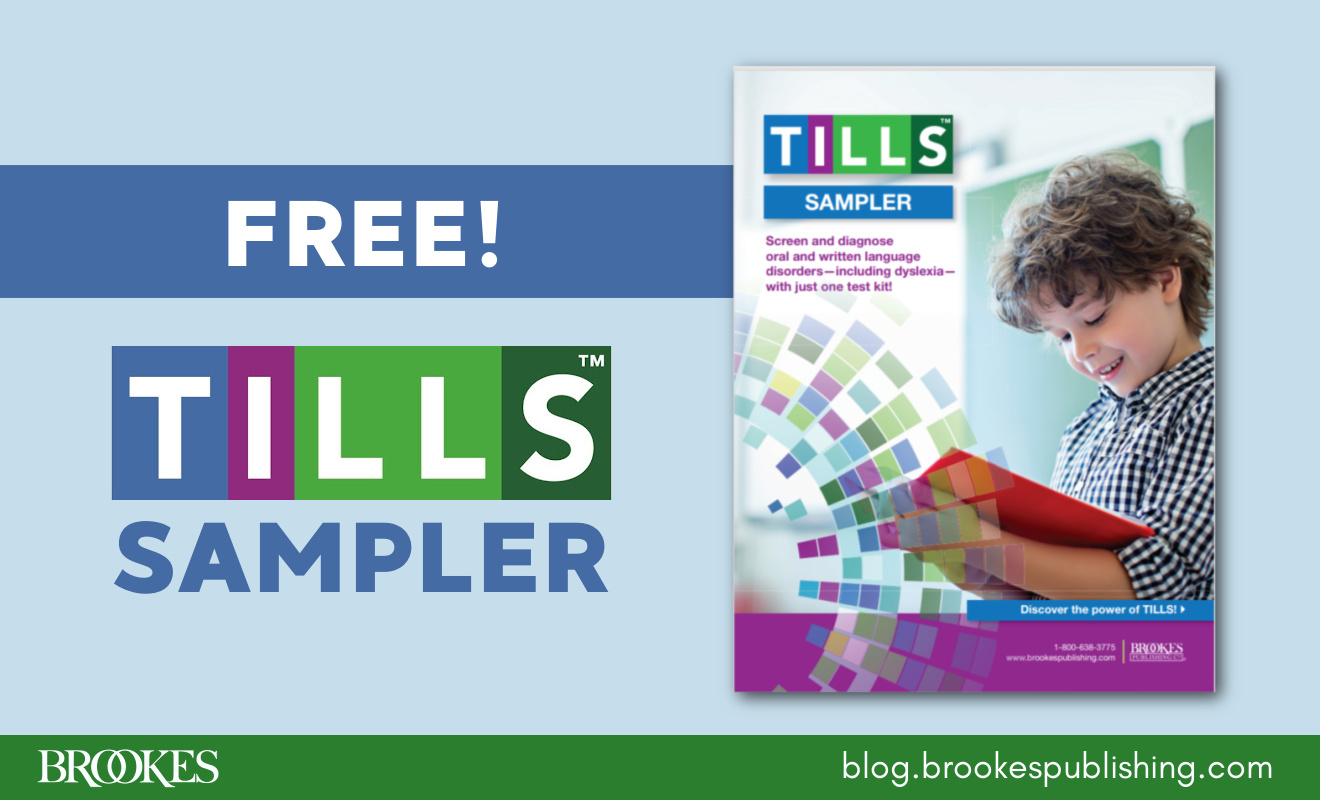5 Common Errors Every TILLS User Should Avoid
August 22, 2024
 Today’s guest post focuses on TILLS™—the assessment that SLPs, educators, school psychologists, and reading specialists rely on to test students’ oral and written language skills and identify language and literacy disorders. Michele Anderson, Ph.D., CCC-SLP, TILLS Consultant/Trainer and research team member, is here to share some important guidance on a few common errors to avoid. If you’re a TILLS user, you’ll benefit from this valuable information as you administer the TILLS test with students.
Today’s guest post focuses on TILLS™—the assessment that SLPs, educators, school psychologists, and reading specialists rely on to test students’ oral and written language skills and identify language and literacy disorders. Michele Anderson, Ph.D., CCC-SLP, TILLS Consultant/Trainer and research team member, is here to share some important guidance on a few common errors to avoid. If you’re a TILLS user, you’ll benefit from this valuable information as you administer the TILLS test with students.
***
We all know when learning a new test, it is of utmost importance to read the Examiner’s Manual. We all want to make sure we are administering and scoring tests the way they were intended, and with fidelity. And the authors of Examiner’s Manuals do their best to write clearly and help those new to a test to understand the what, the why, and the how of each subtest.
That said, it’s not uncommon to learn that perhaps something wasn’t quite so clear or that children give answers that don’t always fit the expected. Since TILLS was published, we have found a few subtests that have needed a little clarification, plus a general question about basals.
- The first subtest that may need additional clarification is Vocabulary Awareness. We’ve realized we needed to make it clearer that only the scores in the “total score” column count towards the ceiling. If zeros in other columns (e.g., 1a or 1b) are counted, it can lead to a false ceiling.
- The second subtest is Story Retell. We have learned that some folks were being a little too literal with the specific wording of the content units. We now emphasize that one should credit any words or phrases that are synonymous with the content elements. When in doubt, think back to the construct of the subtest. Does what the child tell you help you to know that they heard and understood the story, and that they were able to retell the same story, not necessarily using the same words?
- The third subtest is Direction Following. The critical, sometimes-missed detail here is the need to cover the item row in the Student Response Booklet while the student is hearing the oral item directions. The item row should be covered because the student should NOT be able to use what they see to support understanding of what they are hearing. It’s also important that they not be able to visually rehearse their actions while listening. With the items covered up, the student must rely on their auditory verbal working memory in a more curriculum-relevant context, such as when a teacher gives the class multi-step directions to follow.
- Another subtest that may need clarification is Written Expression. Most of the time, the TILLS Written Expression subtest can yield 3 normed scores without much difficulty. However, some cases can make it more challenging. When a student just copies even after being prompted not to, or when a written sample is particularly short, this may lead to an inflated discourse score. It can be very helpful to look at original writing and other classroom work to provide more qualitative information. Having the classroom teacher complete the Student Language Scale may also yield observations to inform your interpretation of overall writing scales. Remember too, there is an entire chapter in the TILLS Examiner Practice Workbook (included in your TILLS kit) that provides explanations and examples for scoring Written Expression.
- And lastly, we sometimes get a general question about establishing basals. If you start with or back up to the first item in a subtest, then you do not need to establish a basal—you simply proceed until you reach a ceiling. However, if you use a start age that skips earlier items, this is when you need a basal. If a basal is not established, you work backwards until you establish a basal or you are at the first item (and thus have no need for a basal).
While we’re talking about common TILLS errors to avoid: we’ve got some free resources that help decrease errors in general (and save you time, too).
The TILLS Easy-Score is your electronic scoring solution for TILLS. When you input raw scores, Easy-Score will auto-populate the front and back pages of the Examiner Record Form in a downloadable pdf, ensuring accuracy and conserving time. (It’s FERPA compliant, as no information is stored.)
The Report Writing Templates (available for free to TILLS website registrants) enable you to cut and paste whatever parts you would like to include in your own report. It helps you describe the TILLS test model, defines sensitivity/specificity and the cut-score, provides you an appendix with subtest descriptions, and gives you a quadrant model graphic to import into your reports.
Have a question about TILLS? Check out the in-depth FAQs on the dedicated TILLS website. If your question isn’t answered there, stop by our TILLS Facebook page on any Monday to get an expert answer from Dr. Michele Anderson. (Don’t forget to follow the TILLS page while you’re there, for the latest news and helpful resources!)




Write a Comment
Your email address will not be published. Required fields are marked *
Post a Comment